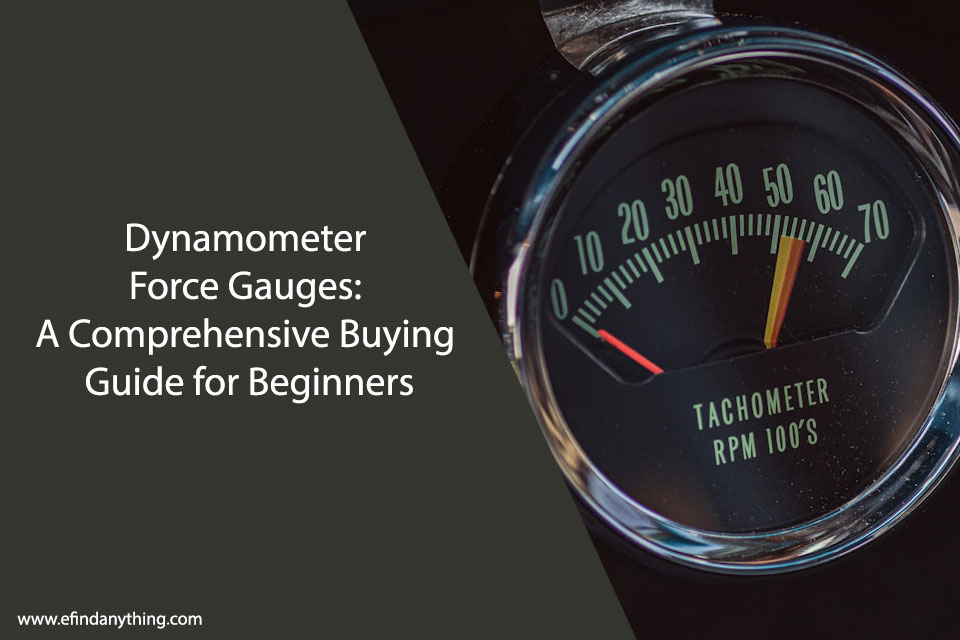Dynamometer force gauges are essential tools for professionals who need to measure force, tension, or torque in various industrial and research applications. With a broad range of models available on the market, choosing the right one for specific needs can be overwhelming, especially for first-time buyers. Understanding the function, applications, and different types of dynamometers, along with recognizing key features, is crucial for making an informed decision. In this article, we’ve prepared a comprehensive buying guide to assist beginners in navigating the complexities of dynamometer force gauges.
Understanding Dynamometer Force Gauges and Their Applications
Dynamometer force gauges are essential tools used to measure push or pull force, ensuring materials and products meet safety and strength standards. These instruments are widely used across industries like manufacturing, healthcare, and product design for tasks such as quality control, ergonomic testing, and performance evaluation. Mechanical versions rely on spring tension, while electronic models, such as the GD-200 3h, convert force into digital readings for added precision and ease.
In research, sports science, and physical therapy, dynamometers provide accurate data to improve product design, track muscle strength, and prevent injuries. Modern models often incorporate smart features, such as data logging, which makes it easier to monitor and analyze performance over time for ongoing studies and consistent quality assessment.
Key Features to Look for in a Quality Dynamometer Force Gauge
When selecting a dynamometer force gauge, prioritize accuracy by choosing one with a low percentage error rate. Ensure the measurement range suits your specific application, and consider resolution, which determines the smallest measurable force change and is crucial for detecting subtle variations. A clear, user-friendly interface enhances ease of use.
Consistency is key, so opt for a gauge with a fast response rate and reliable repeatability for repeated testing. Durability matters, especially in demanding industrial settings. Check for compatibility with external devices and data analysis software. Gauges with output options for computer or printer connectivity streamline the process of recording and reviewing test results.
Analog vs Digital Dynamometer Force Gauges: Pros and Cons
Analog dynamometer force gauges are valued for their simplicity, durability, and independence from power sources, making them ideal for rugged or remote environments. Their mechanical design handles harsh conditions well and offers low maintenance at a lower cost. In contrast, digital dynamometers provide greater precision and advanced features like data logging, wireless connectivity, and statistical analysis, making them suitable for detailed monitoring and record-keeping.
While digital models enhance efficiency and accuracy, they may be more expensive and complex to use. Analog gauges remain a practical choice for basic applications, especially when ease of use and reliability are prioritized over high-tech features and detailed analytics.
Calibration and Maintenance: Ensuring Long-term Accuracy
Regular calibration is essential for maintaining the accuracy of a dynamometer force gauge. It should be done based on manufacturer guidelines or after events like drops or environmental changes. Proper maintenance also supports durability and performance. This includes storing the device in a case, keeping it clean, and avoiding extreme temperatures.
Following the manufacturer’s specific maintenance instructions helps preserve the condition of the product. Choosing a dynamometer with a warranty or reliable customer service provides added support for calibration and repairs. Some models offer self-calibration features for quick checks, but professional calibration remains important for ensuring precision and compliance with established standards.
Where to Buy Dynamometer Force Gauges and Tips for First-Time Buyers
When purchasing a dynamometer force gauge, buyers can choose from industrial suppliers, online marketplaces, or directly from manufacturers. First-time buyers should prioritize reputable vendors that provide post-purchase support and have positive reviews. It’s important to define specific measurement needs, such as maximum force, accuracy, and features like data logging or connectivity, to narrow down suitable options.
Online purchases offer variety and competitive pricing but require clear return policies and warranties for protection. One reliable option is the GD-200 3H, valued for its precision and durability. New users should look for models with intuitive interfaces and strong customer support to ease the learning curve.
Overall, the right dynamometer force gauge can greatly enhance the precision and efficiency of force measurement tasks. By understanding the applications, key features, types, calibration needs, and where to buy, even beginners can choose a gauge that will deliver reliable performance. Armed with this knowledge, you’re ready to make an informed purchase that will meet your requirements and provide value for years to come.
